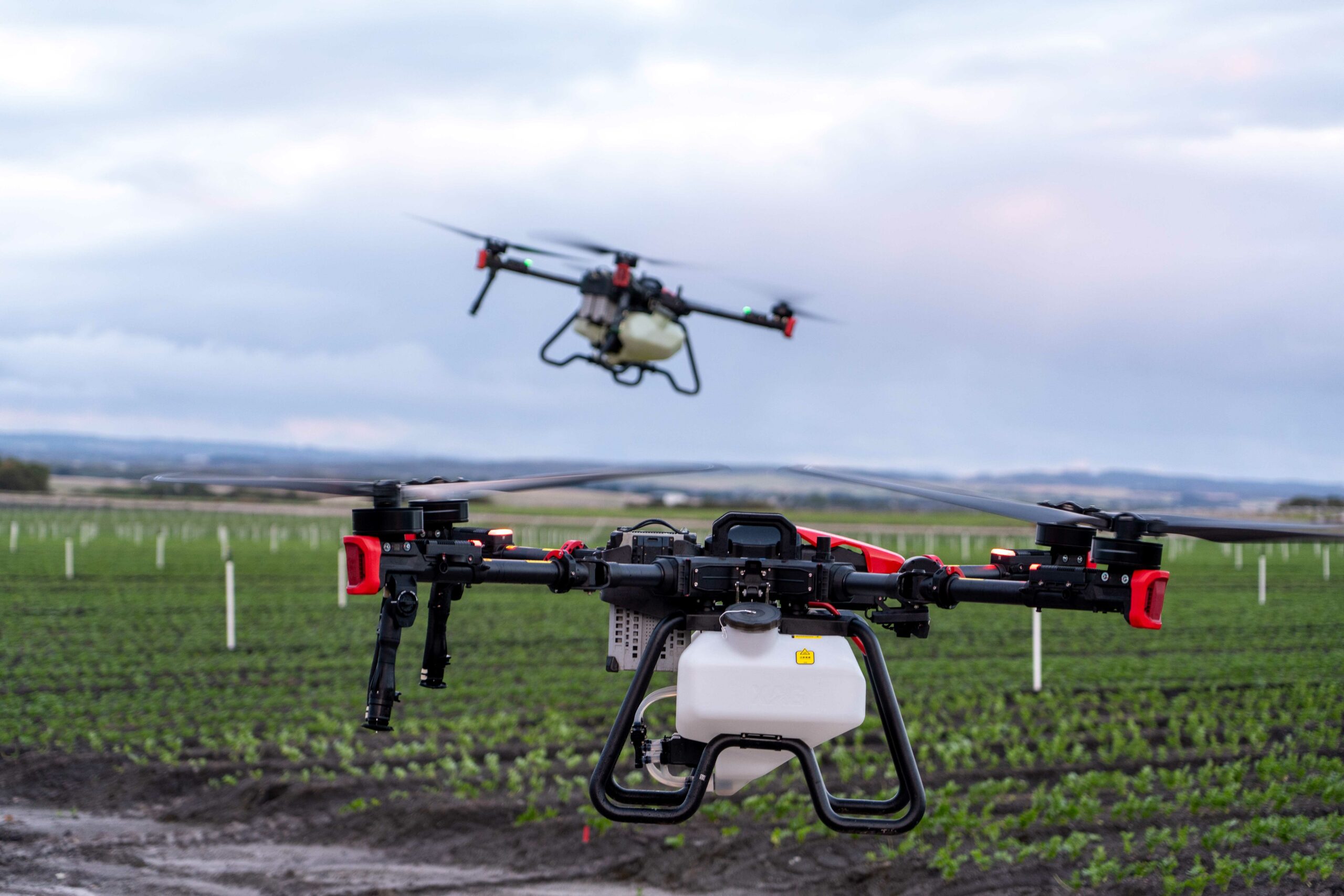
Restoring land, production and community
24 May 2024
Drone spraying demo showcases value of VegNET events for growers
27 May 2024The February 2024 PotatoLink event to bring leading researchers to Gippsland growers provided an opportunity to talk one-on-one about the issues facing Australian potato growers.
The PotatoLink project (PT20000), led by Applied Horticultural Research has been ongoing since 2021, and gives the potato industry the latest in research and best practice.
A regular aspect of the extension program is presentations from leading experts on issues facing industry in management of disease, varieties and production.
The most recent event held in Thorpdale, Gippsland brought together four of USA’s leading researchers in plant pathology and health for potatoes to discuss a range of topics including herbicide damage, late blight, fungicide resistance and blackleg.
In addition, Tolsma Australia gave insights into the latest technology for cool storage of potatoes with a demonstration at the recently opened Lamb Weston facility.
Visiting Australia for the event were:

PotatoLink brought international speakers
to Australia to discuss potato issues. L-R. Dr Mike Thornton, Dr Jeff Miller, Dr Bradley Geary and Dr Andy Robinson.
- Dr Andy Robinson, associate professor and extension potato agronomist from North Dakota State University. A specialist in herbicide best practice for potatoes, he has been a regular visitor to Australia and provides good knowledge of the similarities, and differences between the two countries’ potato industries.
- Dr Mike Thornton, professor of plant science, University of Idaho. A hands on researcher, Dr Thornton looks at management practices and variety evaluation to give the best outcomes for harvest and storage.
- Dr Jeff Miller, principal field investigator and owner of Miller Research. A plant pathologist, Dr Miller specialises in fungal diseases including rhizoctonia, blight, scab, pink rot, fusarium and verticillium wilt – all too familiar to Australian growers.
- Dr Bradley Geary, professor of plant health at Brigham Young University. Soil health, biological control and soil microbiome form the basis of Dr Geary’s knowledge particularly in biological control of soil borne diseases.
The discussion was an opportunity for growers to lead the topics to be covered, that are relevant to their production issues. Guided by Dr Nigel Crump, the afternoon focused on pests and diseases, chemistries and soil health.
A common theme for the event was the need to use chemistries with caution to minimise the risk of resistance developing for weeds and fungi. With many chemistries either removed from use or no longer effective in the US, Australian growers were cautioned to plan ahead in the event that it may occur here.
Understanding the modes of action, and Groups that fungicides in particular operate, as well as timing can make the difference between effective control of soil borne diseases such as target spot, blackleg and verticillium wilt. Recognising the symptoms of disease is also important – late blight is a darker brown with light green halo, while target spot presents as a black lesion with concentric rings. Botrytis occurs lower down on the plant, while late blight is higher up the stem.
Blackleg is a bacterial infection that has two forms depending on location – the ‘new’ blackleg is Dickeya and Pectobacterium parmentieri. Dickeya is more active at warm temperatures can develop quickly, while Pectobacterium parmentieri is more aggressive. According to Dr Crump, it is becoming an emerging issue in Australia and testing is now available.
Dr Robinson commented that herbicide damage, is not unlike weather damage in that if it occurs, it can significantly set the yield potential back. Damage also opens the door to potential disease like black dot taking hold, through the wound sites.
As with fungicides, the available herbicide chemistries are reducing, particularly for post-emergent weeds, meaning that pre-emergent is the preferred application. Germination inhibitors are a good option for targeting weed seeds, before row closure, which also reduces the number of passes in the field.
In terms of non-chemistry management, biofumigants and cover crops are becoming increasingly common in the US. Typically rotations include corn, sugar beets, cereals and lucerne, depending on the region and climatic conditions. For the most part, potatoes are the cash crop, with the rotations providing the necessary break between potato plantings. In the US, a rotation with livestock is uncommon, however using locally sourced manures does occur.
In the US, sustainability is a big focus, particularly around soil health, said Dr Geary. The drive to improve soil health by adding large volumes of compost or microbiomes will be limited by the capacity of the soil. A soil that is already quite healthy in terms of structure, organic matter and organisms, may not show significant increases in yield compared to a soil that is poor in health prior to compost application. The type of soil can also be a factor – pH, aluminium and calcium presence will contribute to the ability of the plant to take on nutrients.
“As farmers we have to continually grow and keep up. The farmers are on one side, the idealistic is on the other, we meet somewhere in the middle, but we come out better as a result of it,” said Dr Geary.

